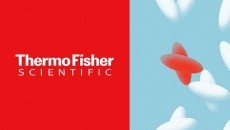Immunomedics: mAb massing method buffers against biosimilars

The New Jersey, US-based firm confirmed it had been granted a US patent for a new method concentrating antibodies for subcutaneous, intramuscular or transdermal administration last week.
Spokesman Chau Cheng told BioPharma-reporter.com: “The patent covers a method of producing a concentrated antibody or immunoglobulin solution in high concentration formulation buffer.
Dr Cheng added that “Before this method was invented, we used a buffer that did not permit this level of high concentration.”
He explained that the method is designed for application during the production of unconjugated antibodies destined for subcutaneous administration in patients with diseases ranging from cancer and autoimmune disorders to neurological and metabolic conditions.
“The patent covers all of our unlabelled antibodies that include epratuzumab (anti-CD22), veltuzumab (anti-CD20), and milatuzumab (anti-CD74), and others.”
Business benefits
The US patent – no 8,658,773 – will protect the concentration method until 2032. However, according to CEO Cynthia Sullivan, the benefits of this bit of IP extend beyond Immunomedics manufacturing operations.
“This is a very important extension of patent coverage for all of its therapeutic antibodies that are desirable for subcutaneous, intramuscular or transdermal administration in very low volumes, thus being a simple, fast, and convenient procedure for use in the doctor's office or even at home.
"Importantly,” she added “this patent extends the coverage of all of our antibodies to 2032, including the anti-CD20, anti-CD74, and anti-CD22 antibodies that are in clinical studies for both oncology and autoimmune disease indications.”
This protection will extend to epratuzumab, which Belgian biopharmaceutical firm licensed for the development of autoimmune disorder treatments for $38m in 2006.
UCB is currently trialling the antibody for the treatment of Systemic lupus erythemotosus (SLE) in a clinical study expected to produce results in Q1 next year.
















